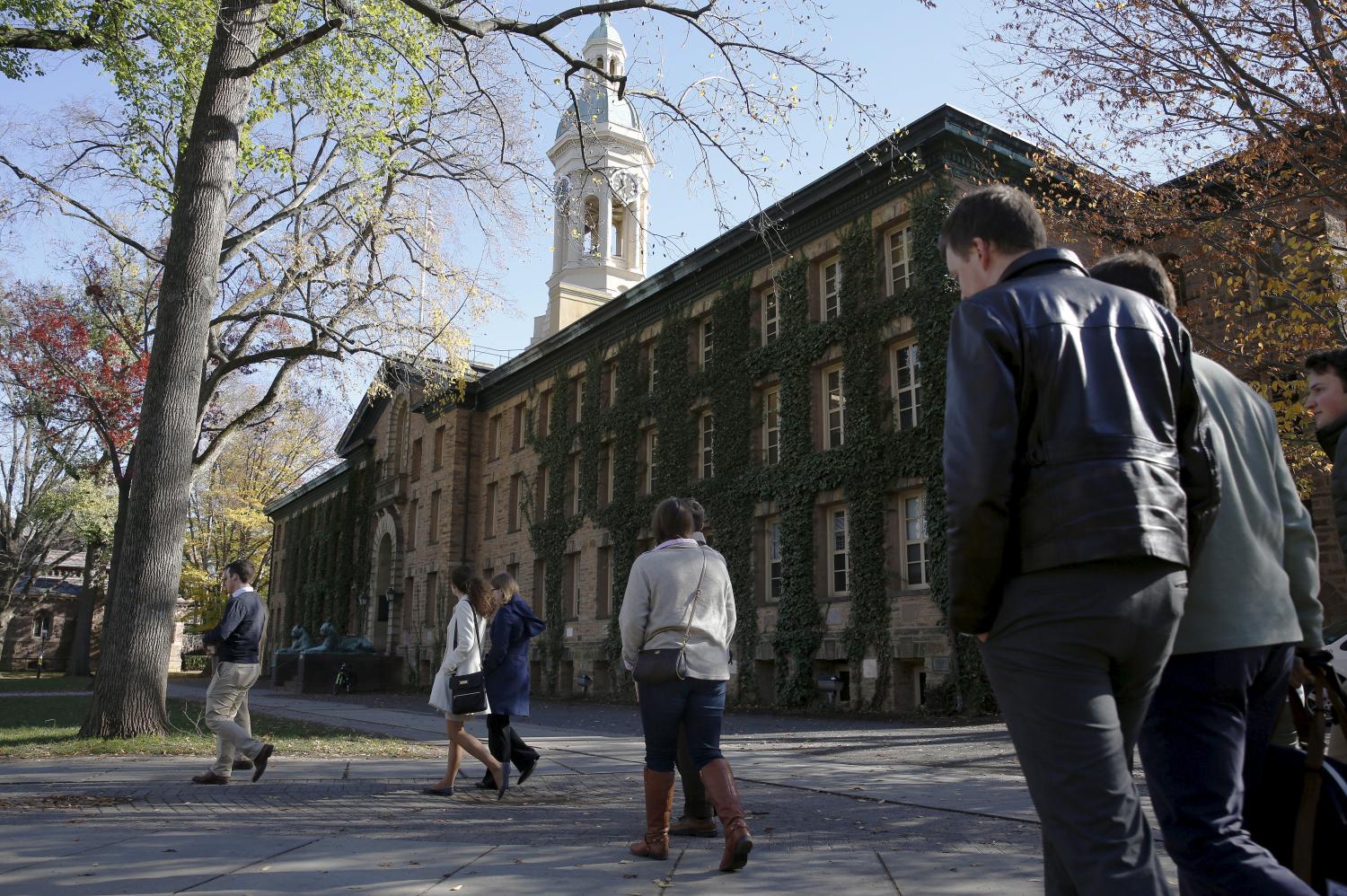If you even casually follow the news, you have probably heard that Americans owe a record $1.3 trillion in student loans. Student loans are now second only to mortgages as the largest source of household debt.[i] Seven million borrowers are in default, and millions more are behind on their payments.[ii]
Readers—and politicians—often connect these two data points: higher debt must lead to increased risk of defaults.
But the fact is that default is highest among those with the smallest student debts. Of those borrowing under $5,000 for college, 34 percent end up in default. This default rate actually drops as borrowing increases. For those borrowing more than $100,000, the default rate is 18 percent.[iii] Among graduate borrowers—who tend to have the largest debts—just seven percent default on their loans.[iv]
What explains this odd pattern? Earnings.
The big borrowers tend to be those who attended graduate school, or who earned undergraduate degrees at expensive, elite institutions. These borrowers spent many years in college, and so racked up many years of debt. But they built up a lot of human capital during their college careers (and brought a lot with them in the first place), which pays off in the labor market.
The small borrowers tend to be those who spent just a year or two at a for-profit or community college. They spent little time in college, and so racked up little debt. But they also built up little human capital (and had low stocks to begin with), and so do relatively poorly in the labor market.
A recent paper by Adam Looney of the Treasury Department and Constantine Yannelis of Stanford University conclusively demonstrated this important link between earnings and borrowing.[v] Looney and Yannelis make use of a new database that matches records on federal student borrowing with the borrowers’ earnings from tax records (with personally identifying details removed, to preserve privacy). These data contain information about who borrows and how much; what college borrowers attended; their repayment and default; and their earnings both before and after college. This is a major step forward in the understanding of student loans, for which data has been frustratingly incomplete.[vi]
Looney and Yannelis find that borrowers at for-profit and community colleges earn low salaries—a median of about $22,000 for those exiting school in 2010. Half of the increase in borrowing between 2003 and 2013 is driven by surge in borrowers at these colleges, where enrollment exploded as workers fled a weak labor market.
Students have always taken on heavy debt at for-profit colleges, which charge high prices and offer little aid. As for-profit enrollment rose—from just four percent of undergraduates in 2000 to eleven percent in 2010—so too did borrowing by their students.[vii] And, as these students entered repayment, defaults rose: the Looney and Yannelis analysis shows that for-profit schools account for 44 percent of defaults in recent years.
Borrowers from four-year colleges, by contrast, tend to earn good salaries out of college and to pay back their loans. For those leaving more-selective colleges in 2010, typical earnings were $49,000. For those leaving less-selective colleges, the figure is $35,000.
Those salaries aren’t lavish, but they’re good enough to let most people meet their initial loan payments—and they tend to lead to bigger salaries in later years.
These data make clear that graduates of four-year colleges, including those who go on to graduate school, are not at the root of high default rates. If we want to reduce distress and default among student borrowers, our poster child should not be the graduate of an elite, four-year institution, but rather a student who dropped out of a non-selective college.
How do we help these borrowers?
One solution is to lengthen the timeframe of loan repayment. In the U.S., the standard is for borrowers to repay their loans in ten years. Other countries let students pay back their loans over a far longer horizon. In Sweden, students pay their loans back over 25 years. For a $20,000 loan with an interest rate of 4.3 percent, this longer repayment would mean a monthly payment of $100 instead of $200.
Borrowers with very low earnings will struggle with even a payment of $100. Some countries, including as England and Australia, therefore link payments directly to income, so that borrowers pay little to nothing during hard times.
The U.S. does have income-based repayment options for student borrowers, such as the Pay As You Earn (PAYE) program. In theory, PAYE holds payments to 10 percent of income. But payments in PAYE can actually consume a much larger share of a borrower’s earnings in a given year.
Why? Loan payments are calculated as 10 percent of the previous year’s disposable income. But income can change a lot over the course of a year. For those patching together several part-time jobs, hours and earnings can bounce around weekly. The payment that would have been affordable last year may well be unaffordable this year.
In PAYE, and all the other income-based repayment programs, every change to earnings requires a new application to adjust the loan payment. Even if earnings don’t change, staying in an income-based plan requires an annual round of complicated financial paperwork. Those who most need a helping hand are probably least able to navigate this bureaucracy.
There are now several proposals circulating in Washington that would get more troubled borrowers into an income-based repayment plan. Some keep the standard 10-year repayment plan, but automatically shift borrowers into an income-based plan if they fall behind on payments.[viii] Others make income-based payment universal, as it is in England and Australia.[ix]
Whatever approach is taken, it’s crucial that loan payments adjust automatically, just as our income-tax withholding adjusts automatically from paycheck to paycheck. Just as is true with taxes, any over- or under-payments can be reconciled at filing time. I’ve written a policy brief on this idea for the Hamilton Project, and the proposals referenced earlier also provide details about how this could be implemented.[x]
A policy that eliminated debt would also do away with default. But an end to student borrowing is not on the horizon. Even if tuition were free at public colleges, many students would still borrow to fund their living expenses. And none of the free-college proposals apply to for-profit or private colleges, where borrowing is high. Fixing repayment therefore requires its own policy solutions, separate from efforts to reduce college costs.
[i] See data from the Federal Reserve Bank of New York: http://libertystreeteconomics.newyorkfed.org/2015/02/looking_at_student_loan_defaults_through_a_larger_window.html
[ii] The US Department of Education provides information on aggregate borrowing and default rates. http://ifap.ed.gov/eannouncements/082015FederalStudentAidPostsUpdatedReportstoFSADataCenter.html
[iii]http://libertystreeteconomics.newyorkfed.org/2015/02/looking_at_student_loan_defaults_through_a_larger_window.html
[iv] http://www2.ed.gov/about/overview/budget/budget16/index.html
[v] https://www.brookings.edu/about/projects/bpea/papers/2015/looney-yannelis-student-loan-defaults
[vi] Susan Dynarski, “So Much Student Debt, So Little Information.” March 22, 2015. New York Times.” http://www.nytimes.com/2015/03/22/upshot/were-frighteningly-in-the-dark-about-student-debt.html
[vii] http://trends.collegeboard.org/college-pricing/figures-tables/enrollment-level-enrollment-and-attendance-status-over-time
[viii] http://ticas.org/sites/default/files/pub_files/TICAS_IDR_White_Paper.pdf
[ix] https://www.ced.org/pdf/Automatic_for_the_Borrower.pdf
[x] http://www.hamiltonproject.org/papers/loans_for_educational_opportunity/
The Brookings Institution is committed to quality, independence, and impact.
We are supported by a diverse array of funders. In line with our values and policies, each Brookings publication represents the sole views of its author(s).





